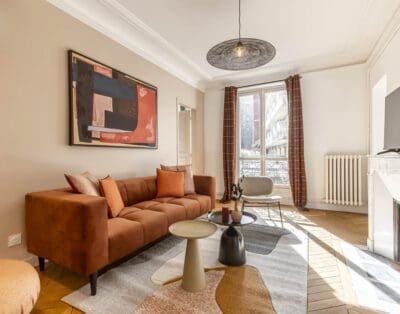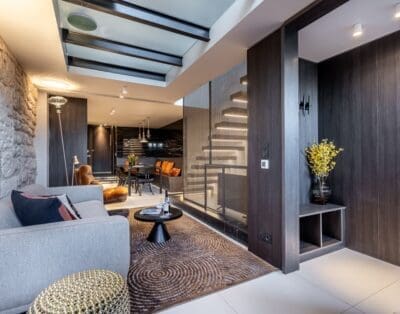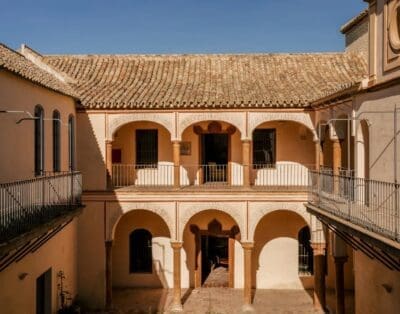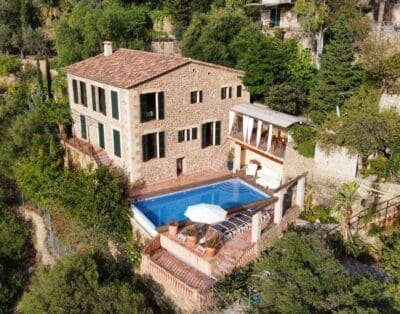Atlantic Princess Wreck Diving With ScubaCaribe In The Dominican Republic
Hispaniola is the second largest island in the Caribbean and shared by the Spanish speaking Dominican Republic and French Haiti. The diving in the Dominican Republic is famous for its live coral reefs, plentiful aquatic life, great visibility, warm waters and excellent dive schools. Our editorial team teamed up with ScubaCaribe, a PADI Five Star Dive Center, for some action adventure diving and sailing on Bayahibe beach, South side of the island, in the Caribbean Sea.
We stayed at Dreams La Romana where ScubaCaribe have a dive office right next to the beach. As I first rocked up at the desk to say hello I was welcomed by the lovely Keila with one of the warmest and sincerest smiles I have ever seen and a gentle fist bump. I soon learned this was a signature greeting and method of communication, with plural meanings, everything from “hello”, “how are you”, “you’re looking good” to “everything ok” and “well done”.
Keila, Genesis and Cesar, a distinguished wind surfing master, immediately treated me as an old friend and babbled away in a mix of English and Spanish that just epitomised holiday spirit and we set about arranging a series of dives for the whole family.
We started with a quick refresher course in the pool, always a good idea if you’ve not dived for a year or more. The boys and I dived last year so we were all pretty up to speed and the dive instructor Noe was excellent, relaxed yet observant, fun yet precise, covering all the skills we needed. Ideal to get familiar with the top notch ScubaPro equipment. Plus the pool dive really gets you prepped and excited for the sea dive.
So the next morning we rushed over to breakfast and were ready at the dive hut by 8am. Early morning is often the best time to dive as the sea is calm from the night before and visibility is usually good. Our first dive was the Viva Shallows site, around a depth of nine metres, with plenty of wildlife. We got prepared, selecting masks, fins and wetsuits, followed by the usual struggle into our BCD’s and tank. The boat came and picked us up on the beach in front of the hut, so no long walks with the equipment and we yachted around ten minutes over to the dive location. I checked my buddy Joseph’s equipment and he checked mine and then with one hand on our masks and the other on our weight belts we jumped into the sea.
Once we were all ready our instructor Noe nodded and we sank gently beneath the surface of the water, our BCD inflator hose held high, the bubbles spinning and twirling above us. The reef came into view as we floated gently down. Fronds waving in the current, teaming with shoals made up of hundreds of fish in extraordinary colours; pinks, purples, greens, all speckled and sparkling from the light piercing though the water. We stared in awe at the marvellous puffer fish, stout box fish, trumpet fish, sinewy eels and a couple of gorgeous rays. It truly is a different world, an alien planet, more entrancing and spectacular for being accompanied by the sound of echoed breathing, the susurration of sand and the tinkle of stones, shifting with the sea.
The coral here is magnificent, so alive and thriving. ScubaCaribe takes good care of it and even has branching and stag horn coral nurseries, so named as they resemble Stag’s horns, which grow faster than massive corals, as much as 20cm a year. Coral aquaculture is fascinating and brings a real sense of hope for the future as reefs are dying out in many places around the world. Coral reefs are essential as homes, protection and feeding for aquatic wildlife, numerous species are utterly dependent on them. These farms use both metal structures on the seabed and vertical rope latticeworks that rise upwards to the surface to seed the coral far and wide. ScubaCaribe were recently awarded a Green Fin Certification by Reef Check for their continued efforts towards marine life conservation and the environment. Green Fins is an initiative by the United Nations Environment Program (UNEP) and The Reef-World Foundation.
ScubaCaribe has been actively engaging in coral reef protection and marine life conservation by adopting dive sites, cleaning up beaches and reefs, continuously educating their guests during briefings, teaching specialties like PADI Aware Coral Observation and PADI Bull Shark Diver, securing turtle nests, and installing their own coral nursery in Bayahibe/ Dominican Republic in 2015, supervised by the marine biologists of the NGO Fundemar.org.
Noe our dive instructor was cool, charming and a terrific dive buddy. Whilst I was aware that he was keeping a constant watchful eye on us all, he made sure the dive was fun and enthralling, pointing out crab spiders, rays and all other manner of unusual and captivating aquatic oddities. With a sharp clink of metal from his wand rapping on his oxygen tank he would draw our attention to some novelty or to check air supply. The boys were even quicker than I to signal back with precise hand movements, obviously channelling every Bond film they’d seen.
With our first dive under our belt we were ready next morning for our first wreck dive in Bayahibe, famous for its three ship wrecks. Our destination, again only around ten minutes by boat from the beach, was The Atlantic Princess, a tourist boat that sank in 2009 during Tropical Storm Fay. We were joined for this by our videographer and photographer Lucia, which was marvellous timing as the location was absolutely exceptional. For this dive Noe instructed us to descend following the rope and as we got nearer the bottom the sunken ship came into view. It was almost completely obscured by coruscating shoals of shimmering fish, so many species flowing and cascading around the metal cruiser, which lay flat on the bottom, around 12 metres deep.
It was breathtaking, the boys and I could not believe the panorama before us. This was the wreck you dreamt about diving, straight out of an action movie or video game. As we approached, the command cabin or bridge became visible, rising above our heads, towering over the massive rusted iron flanks of the ship. We proceeded to fin around the sides of the boat, surrounded by shoals of thousands of curious fish, that came right up to our masks, serenely sweeping right or left at the last moment. You could reach out and nudge them gently with your hand. The colours scintillated, changing hues and tone, in electric and metal paints, dancing right before your eyes. One species of fish seemed entirely designed in pearlescent scales, that rippled as they swam.
We swam past portholes, wide eyed creatures darting in and out, the encrusted walls leaning out over us. The upper floor of the ship had torn partly away and was flowing up and down like a fan. One of the ships funnels had collapsed and lay, cannon like, on the seabed, covered in all manner of barnacles. As we reached the stern we saw the cabins ripped open and now home to fish of every size and shape, eyes staring as we flew over. We swam through the bridge, gliding by the evocative engine order telegraph, resembling a giant watch. From here you could see right down into the engine room below, with the steel winches at the end gleaming with crustaceans. At any moment I expected Davy Jones to emerge from the walls.
We explored this ship from top to bottom, admiring the sea life and the ship with wonder, more fish than I have ever seen, so unafraid of divers, even our bubbles did not seem to bother them. Finally with great reluctance we congregated back at the rope and slowly made our way up, with the usual three minute safety stop at around five metres. The boys were ecstatic about the wreck and the variety of sea life. It was an unforgettable experience. Luckily we had this all on video too, though I would recommend taking it in turns, as the very act of photographing means that you miss the wonder of the dive.
In all I dived five times with Noe off Bayahibe at different locations and each and every dive was different and amazing. Coco Reef, another 12 metre dive, stood out as it boasted giant statues on the sandy desert floor, one a cobbler working on his shoes, another a smartly dressed women in a local dancers outfit. The statues were eerie, reminiscent of lost civilisations, out of place in this underwater haven. Again we found many coral farms, with rope and table nurseries, a testament to the ecological efforts being made in the area. Another sublime find were the grasses that stretched out over the sands near the reefs, rising up to 40cm, swaying above the seabed. These would selectively disappear as you drew near, hiding back down into their holes, as they were actually garden eels, and you could just make out the eyes at the top of the stalks.
ScubaCaribe is a truly excellent dive centre, especially for families starting out. You could not find a better place to do your PADI Open Water, as my son did. Keila is warmth personified, and truly a pleasure to chat with, about everything from feminism to motor cross. We had a disagreement over who took the most risks. She felt I pushed the windsurf out too close to the boats to catch the wake waves, yet she practised motocross in the island forests (a far more dangerous sport). She was definitely more daring. Noe the dive instructor, also a motocross fan, is charming and a great mate to share a dive with. He was impressive with both teenagers and children, a natural teacher, engaging and inspiring them to love diving.
Genesis lit up the beach with her smile and looked after everybody with style. All the people working at ScubaCaribe dive centre are locals from the Dominican Republic, a delightful mixture of Spanish and Caribbean, so you get to experience their love of diving and their expertise of the area. Another local Simon, who runs the sailing boats, was incredibly friendly (called me “Diver”) and one of the many highlights of the trip were my regular windsurfing races with John Lennon (his nickname), who looked after the equipment. For the young ones they also do a banana boat which is brilliant fun, plus you can hire a private catamaran to take you to Saona Island, a legendary postcard Caribbean island, part of a protected national park.
ScubaCaribe offers the best combination of professional services, superb dive sites, fun, sincerely friendly staff and family orientated courses I have ever had the pleasure to experience. I highly recommend them for divers of all levels, though they are particularly good for beginners who will love diving with such friendly and passionate instructors. They truly live up to their motto “fun from the beginning”.
ScubaCaribe offers diving in Aruba, Cape Verde, Costa Rica, Panama, Jamaica, Mexico, Mauritius, and the Maldives, as well as the Dominican Republic.
@scubacaribedominicanrepublic (FB)
@scubacaribe (FB/ Twitter/ Instagram)
You can find all the details and packages on the websites below.https://www.scubacaribe.com/locations/dominican-republic/https://www.sc…







